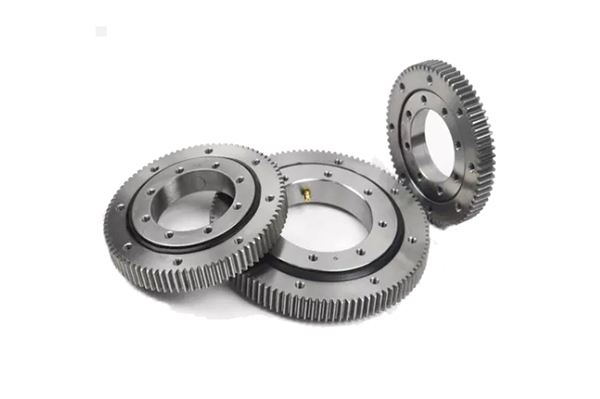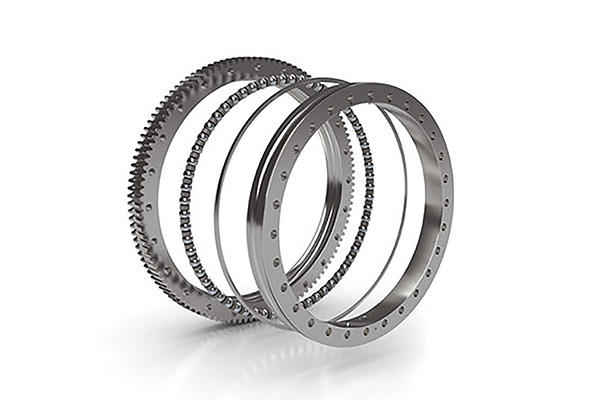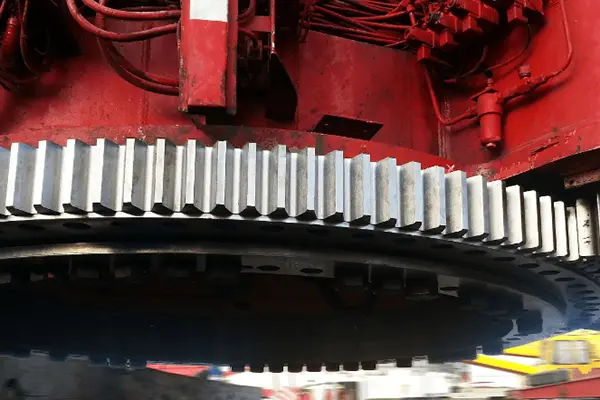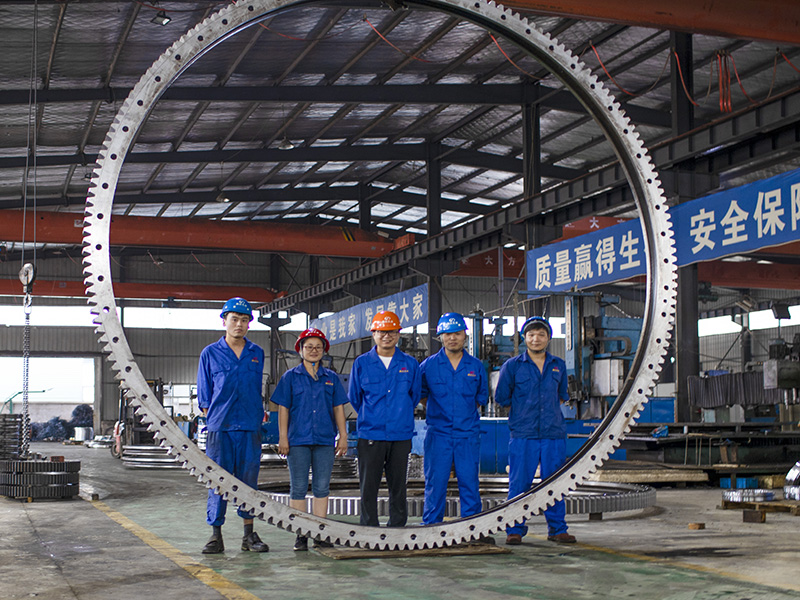
Understanding Slewing Ring Bearings: How They Work and Why They Matter
2025-05-07
Hello there! I’m Allen, and from my perspective as a factory owner here in China, specializing in the design and manufacture of slewing ring bearings, I’ve seen firsthand how crucial these components are across numerous industries. If you’re like many of my customers, perhaps someone like Mark Thompson from the USA – a decisive business owner who needs reliable, cost-effective bearing solutions – you’ll want to understand the ins and outs of these powerful slewing components. This article is for you. We’ll dive deep into what a slewing bearing is, how a slewing ring works, the different types available, and what makes a quality bearing. You’ll learn why choosing the right slewing ring bearing is vital for the performance and longevity of your equipment, whether it’s a massive excavator or a precision medical scanner. This knowledge will empower you to make informed purchasing decisions and ensure your machinery operates at its best.
What Exactly is a Slewing Bearing and How Does a Slewing Ring Work?
Let’s start with the basics. What is a slewing bearing? You might also hear it called a slew ring or a turntable bearing. Essentially, a slewing bearing is a large-diameter bearing that can accommodate a combination of loads. We’re talking axial loads (pushing or pulling along the axis of rotation), radial loads (pushing from the side), and moment loads (tilting or overturning forces). This ability to handle multiple load types simultaneously is what makes a slewing bearing so versatile. Think of it as a rotational rolling-element bearing that typically includes an inner ring and an outer ring, one of which usually incorporates a gear.
The core function of a slewing bearing is to facilitate smooth, precise rotation between two parts of a machine, even when under significant stress. The slewing ring works by having rolling elements – either balls or rollers – positioned between the inner and outer rings in carefully machined grooves called raceways. As one ring rotates relative to the other, these rolling elements reduce friction, allowing for efficient movement. Many slewing ring bearings may also include features like gear teeth (internal or external) for power transmission, as well as seals to protect the bearing from contaminants and retain lubrication. The design ensures that the load is applied evenly across the rolling elements, which is crucial for the bearing‘s longevity and ability to support heavy loads. As a manufacturer, we pay close attention to these details to enhance the performance of every bearing we produce.

Why are Slewing Rings So Important in Heavy Machinery and Other Bearing Applications?
Now, why are these slewing rings so vital? Well, in many industries, especially those involving heavy machinery, the ability to rotate massive structures safely and efficiently is paramount. Slewing bearings are essential components in equipment like a crane, an excavator, wind turbines, and even in more delicate applications like medical scanners. Without a robust slewing bearing, these machines simply couldn’t perform their primary functions. For instance, an excavator needs to swing its arm 360 degrees to dig and move material; this 360-degree rotation is made possible by a heavy-duty slewing bearing. A crane relies on its slewing bearing to rotate and position heavy loads with precision.
The importance of a slewing bearing goes beyond just enabling rotation. These bearings provide the structural support needed to handle the immense forces involved. They are designed to handle not just the weight of the rotating component but also the dynamic loads generated during operation. Think about the tilting forces on a crane boom as it lifts a heavy object – the slewing bearing must withstand these moment loads without failing. Furthermore, a well-designed slewing bearing contributes to the overall efficiency and safety of the equipment. Smooth rotation means less energy consumption and less wear and tear on other components. For businesses like Mark’s, who integrate these bearings into their equipment, the reliability of the slewing bearing directly impacts their product’s reputation and operational uptime. It’s not just a part; it’s a cornerstone of machine performance. The ability to support these complex load scenarios is a hallmark of a good bearing design.
What Are the Main Types of Slewing Bearings I Should Know About?
As a procurement officer or company owner, understanding the different types of slewing bearings can help you select the most suitable one for your specific bearing applications. Here at our factory, we produce a wide variety, but they generally fall into a few main categories based on their rolling elements and raceway configuration.
- Single-Row Four-Point Contact Ball Slewing Bearings: These are very common and versatile. They use a single row of balls that contact the raceways at four points. This design allows them to handle axial, radial, and moment loads. They offer a good balance of load capacity, size, and cost. Many customers find our versatile single row ball slewing bearings meet a wide range of their needs.
- Single-Row Crossed Roller Slewing Bearings: These bearings use cylindrical rollers arranged in a crisscross pattern. Each roller is oriented perpendicular to the adjacent one. This configuration allows them to handle high radial and axial loads, as well as significant moment loads, often in a more compact bearing profile than ball bearings of similar capacity.
- Double-Row Ball Slewing Bearings: As the name suggests, these have two rows of balls. This design significantly increases their load-carrying capacity, particularly for axial loads. They are often used in applications where higher loads or greater stiffness is required. We offer several precision double-row ball slewing ring designs for such demanding tasks.
- Three-Row Roller Slewing Bearings: These are the heavy-lifters. They typically have three independent rows of rollers, with each row designed to carry specific loads (e.g., one row for radial loads, and two for axial loads and moment loads). These bearings are designed to handle extremely heavy loads and are found in the largest machinery, like giant cranes and excavators. For the toughest jobs, consider our robust roller slewing bearing solutions.
- Light Type & Flange Slewing Ring Bearings: For applications where weight or space is a constraint, light type slewing ring bearings are an excellent option. Some slewing bearings also come with flanges on the inner and outer rings for easier mounting.
Each bearing type has its own strengths, and the choice depends heavily on the specific load is applied, the required precision, the operating environment, and, of course, budget. We often work with clients to enhance their selection process.
Could You Explain the Four-Point Contact Ball Bearing Design?
The four-point contact ball bearing is a really popular choice for many slewing bearing applications, and for good reason. Let me break down its bearing design. Imagine a single row of steel balls nestled between the inner and outer rings of the bearing. The "four-point contact" part refers to how each ball makes contact with the raceways – the specially shaped grooves on the rings. The geometry of these raceways is designed so that each ball touches the inner ring at two points and the outer ring at two points when under a pure axial load. This creates four distinct contact points, hence the name.
This four-point contact geometry is what gives this type of slewing bearing its versatility. It allows a single row of balls to effectively handle axial loads from both directions, radial loads, and tilting moment loads. This makes the four-point contact ball slewing bearing a very compact and economical solution for many applications that use slewing mechanisms. For example, they are often used in access platforms, light-duty cranes, and various types of industrial turntables. The simplicity of the design also makes them relatively straightforward to manufacture, which can contribute to their cost-effectiveness. However, it’s important to ensure the bearing is correctly sized for the application, as overloading can lead to premature wear on the raceways and balls. A slewing bearing with four-point contact is a real workhorse.

What Makes Crossed Cylindrical Roller Bearings a Good Choice for Certain Applications?
Crossed cylindrical roller bearings offer a different approach to managing loads within a slewing bearing system. Instead of balls, these bearings use cylindrical rollers as the rolling elements. The "crossed" part is key: the rollers are arranged so that their axes are perpendicular to each other, alternating in direction, within a single raceway. This unique arrangement means that the bearing can handle radial loads, axial loads from both directions, and moment loads all at the same time, and often with greater rigidity and accuracy than a comparably sized ball bearing.
Why choose a cross roller slewing bearing? They are particularly well-suited for applications requiring high rotational accuracy and stiffness, and where space might be limited. The line contact provided by the cylindrical rollers (as opposed to the point contact of balls) gives them a higher load capacity for a given bearing size. This makes them ideal for applications like precision rotary tables, medical equipment (like CT scanners where smooth, precise rotation is critical), robotics, and machine tools. The bearing with crossed cylindrical roller design can effectively distribute loads, leading to smooth rotation and a long service life, provided they are properly installed and lubricated. While they might sometimes be a bit more expensive than a four-point contact ball bearing, the enhanced performance in terms of rigidity and load capacity often justifies the investment for the right bearing applications.
What Key Factors Should I Consider for Slewing Bearing Design and Selection?
Selecting the right slewing bearing is a critical decision that can significantly impact your equipment’s performance and lifespan. As someone who helps customers like Mark navigate this process, I always emphasize a few key factors in bearing design and selection. First and foremost are the loads. You need a clear understanding of all the forces the bearing will experience:
- Axial Loads: The thrust or vertical load.
- Radial Loads: The side or horizontal load.
- Moment Loads: The tilting or overturning load. It’s crucial to quantify these loads accurately, including any dynamic or shock loads. The ability to handle heavy loads is often a primary concern.
Beyond loads, consider the duty cycle and rotational speed. Will the bearing operate continuously or intermittently? Will it rotate slowly or at higher speeds? The bearing‘s size and space constraints are also important; you need a bearing that fits your design. The operating environment plays a big role too – will the bearing be exposed to extreme temperatures, moisture, dust, or corrosive substances? This will influence the choice of materials, seals, and lubrication. For instance, in marine applications, corrosion resistance is a major factor for any bearing slewing ring. The required precision of rotation and the acceptable level of play or clearance in the bearing are also vital considerations, especially in applications like robotics or radar systems where precise positioning is essential. Lastly, the type of gearing (internal, external, or no gear) and its specifications must match your power transmission needs. These are all things a good high-quality slewing ring bearings supplier like us will discuss with you to enhance your selection.
In Which Bearing Applications are Slewing Rings Most Commonly Used?
The versatility of slewing ring bearings means they slewing bearings find diverse applications across a vast range of applications. I’ve seen our bearings go into some truly impressive machinery. Here are some of the most common sectors and applications include:
- Construction Equipment: This is a big one. Excavators, mobile cranes, tower cranes, concrete pumps, and access platforms all rely heavily on slewing bearings for their rotational movements. The ability to support heavy components and working loads is key here.
- Wind Turbines: In the renewable energy sector, slewing bearings are critical for both yaw (rotating the nacelle to face the wind) and pitch (adjusting blade angle) control in wind turbines. These bearings must withstand harsh environmental conditions and operate reliably for decades.
- Industrial Machinery: Many types of industrial equipment use slewing mechanisms, including bottling and filling machines, packaging equipment, and large turntables used in manufacturing processes.
- Material Handling: Stackers, reclaimers, ship loaders/unloaders in ports and mining operations use large slewing bearings for enabling efficient loading and movement of bulk materials.
- Medical Equipment: Precision slewing bearings are found in CT scanners, MRI machines, and X-ray equipment, where smooth rotation and high accuracy are paramount.
- Robotics: Industrial robots often incorporate slewing rings in their joints to provide a wide range of motion and high load-carrying capacity in a compact space.
- Aerospace and Defense: Radar and antenna pedestals, missile launchers, and tank turrets are examples of aerospace and defense applications where slewing bearings provide critical rotational capabilities.
- Solar Tracking Systems: To maximize energy capture, large solar panel arrays use slewing bearings to track the sun’s movement across the sky.
The applications of slewing bearings are incredibly broad, highlighting their importance as components in modern engineering. Any application that needs to support heavy loads while allowing for controlled rotation is a potential candidate for a slewing bearing.

Why is Proper Lubrication Critical for My Slewing Bearing’s Performance and Lifespan?
As a bearing manufacturer, I can’t stress enough how important proper lubrication is for any slewing bearing. It’s like the lifeblood of the bearing. The primary purpose of lubrication is to reduce friction between the rolling elements (balls or rollers) and the raceways, as well as between the rolling elements and the cage (if present). This reduction in friction minimizes wear, prevents overheating, and ensures smooth rotation of the bearing. A properly lubricated slewing bearing will operate more efficiently and quietly.
Beyond friction reduction, lubrication plays other vital roles. It helps to protect the finely machined surfaces of the bearing from corrosion. This is especially important if the slewing bearing is operating in a damp or corrosive environment. The lubricant also acts as a barrier, helping to prevent contaminants like dust, dirt, and moisture from entering the critical rolling contact areas of the bearing. Contamination is a leading cause of premature bearing failure. Furthermore, the lubricant can help to dissipate heat generated within the bearing during operation. It’s necessary to ensure that the correct type and amount of lubricant are used, and that it’s reapplied at the recommended intervals. Neglecting lubrication for your slewing bearing is a sure way to shorten its life and risk unexpected downtime for your machinery. Many slewing ring bearings may come pre-lubricated, but a regular maintenance schedule is still crucial.
How Can I Be Sure I’m Getting a High-Quality and Reliable Slewing Bearing?
This is a question I often hear from customers like Mark, who are rightly concerned about the quality and reliability of the slewing bearings they purchase, especially when sourcing from overseas. Ensuring you get a high-quality slewing bearing involves looking at several factors:
- Material Certifications: A reputable bearing manufacturer should be able to provide material certifications for the steel used in the rings and rolling elements. This confirms that the materials meet the required strength and durability specifications. This is a key concern for verifying load capacity.
- Dimensional Accuracy: The slewing bearing must be manufactured to precise dimensional tolerances. Any deviation can affect its fit, performance, and lifespan. We, for example, use advanced CMM (Coordinate Measuring Machines) to check every critical dimension of the bearing.
- Raceway Hardness and Geometry: The raceways are where the action happens. They must be properly hardened to withstand the contact stresses from the rolling elements. The geometry of the raceways (their shape and finish) is also critical for smooth operation and even load distribution in the bearing.
- Gear Quality (if applicable): If your slewing bearing has gear teeth, their quality is vital. This includes the accuracy of the tooth profile, proper heat treatment for wear resistance, and consistent backlash.
- Sealing Effectiveness: Good seals are essential to keep lubrication in and contaminants out of the bearing. The seal design and material should be appropriate for the operating environment of the slewing bearing.
- Testing and Quality Control: Ask about the manufacturer’s quality control processes. Do they perform load testing, rotational accuracy tests, or non-destructive testing (like magnetic particle inspection for cracks) on their bearings? A good bearing manufacturing process includes rigorous QC.
- Compliance with Standards: Check if the slewing bearing complies with relevant industry standards, such as ISO standards for bearings. This can provide an assurance of quality and interchangeability. SKF, for instance, is a well-known brand that adheres to high standards.
- Supplier Reputation and Experience: Look for a supplier with a proven track record and experience in manufacturing the type of slewing bearing you need. Customer testimonials and case studies can be insightful.
By paying attention to these aspects, you can significantly enhance your chances of sourcing a reliable slewing ring bearing that will perform as expected. It’s important to ensure these checks are part of your procurement process.

As a Buyer Like Mark, What Should I Look for When Sourcing Slewing Bearings from a Factory?
For buyers like Mark Thompson, who are decisive and looking for quality slewing bearings at competitive prices, often from developing countries like China, there are several practical things to consider when sourcing directly from a factory like ours. Building a good relationship with your slewing bearing supplier is key.
Firstly, communication is paramount. Mark’s pain point about inefficient communication is common. Look for a factory with responsive and knowledgeable sales and technical teams who can clearly understand your requirements and answer your questions about the bearing promptly. Language barriers can sometimes be an issue, so clarity is vital. Secondly, discuss lead times openly. Shipment delays can wreak havoc on production schedules. Get realistic lead time estimates for your slewing bearing order and understand the factory’s capacity. Thirdly, inquire about customization. Can the factory tailor the slewing bearing design to your specific needs? This might include special gear configurations, mounting hole patterns, or sealing arrangements. A good bearing partner will work with you.
Fourthly, understand their quality assurance processes thoroughly. Don’t just take their word for it; ask for details about how they verify load capacity, ensure dimensional accuracy for the slewing bearing, and test gear quality. If possible, a factory audit or third-party inspection before shipment can provide peace of mind. Fifthly, clarify warranty and after-sales support. What happens if there’s an issue with the bearing after delivery? A reliable factory will stand behind its slewing ring bearing products. Finally, while competitive pricing is important, don’t let it be the sole deciding factor. The total cost of ownership, including potential downtime or replacement costs due to a low-quality bearing, should be considered. Sourcing a bearing slewing ring effectively involves balancing cost with quality and supplier reliability. We strive to offer optimal economy and capacity for our bearings.
As someone who has built a slewing bearing business on these principles, I believe that transparency, quality, and good communication form the foundation of a successful partnership. We aim to be more than just a supplier; we want to be a trusted partner in your success, providing the slewing bearings that keep your operations moving smoothly.
Key Takeaways for Your Slewing Bearing Needs:
- Understand the Basics: A slewing bearing (or slew ring) is a large-diameter bearing designed to handle combined axial, radial, and moment loads, enabling smooth rotation.
- Types Matter: Choose from four-point contact ball bearings, crossed cylindrical roller bearings, double-row ball bearings, or three-row roller bearings based on your specific load and application requirements. The bearing design is crucial.
- Applications are Diverse: Slewing bearings are used in everything from excavators and cranes to wind turbines, medical equipment, and robotics. Many industries use slewing technology.
- Load Calculation is Critical: Accurately determine all loads (axial, radial, moment) your slewing bearing will encounter. The ability to support these is fundamental.
- Lubrication is Non-Negotiable: Proper and regular lubrication is essential for minimizing wear, preventing corrosion, and extending the life of your slewing bearing. It protects against contaminant entry.
- Quality Verification is Key: When sourcing a slewing bearing, insist on material certifications, dimensional accuracy checks, and understanding the manufacturer’s quality control for the bearing.
- Supplier Relationship: Effective communication, clear lead times, and after-sales support are vital when working with a slewing bearing factory, especially for international buyers.
- Value Over Price: While cost is a factor, the reliability and longevity of the slewing ring bearing offer better long-term value. Don’t compromise quality for a slightly lower price on your bearing.
I hope this detailed look into the world of slewing bearings has been informative! We, as a dedicated slewing bearing manufacturer, are always here to help you find the perfect bearing solution.





